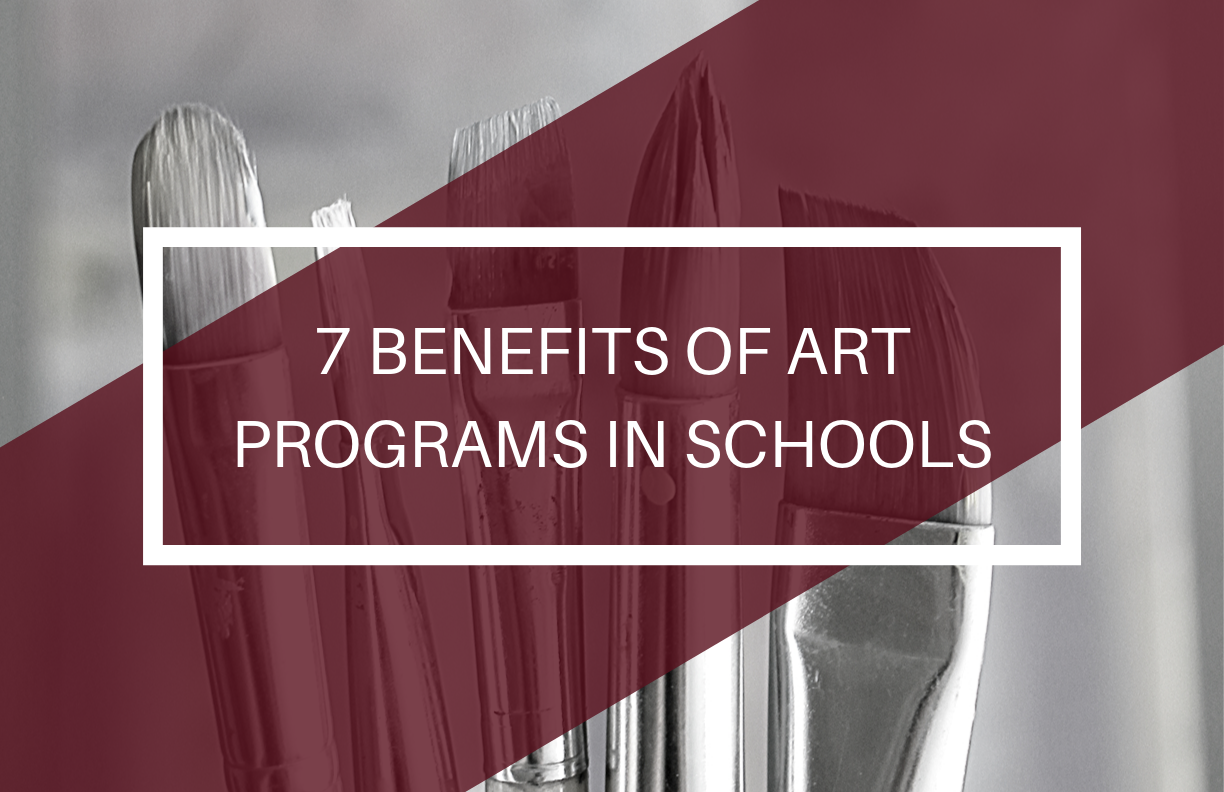7 Benefits of Art Programs in Schools
When budget cuts strike, art programs are often the first to go.
There are several devastating examples of this conduct across the nation. For example, from 2014-2018, 1,110 of Oklahoma schools cut their arts programs completely.
Even more, thousands upon thousands of art and music programs are still eliminated from schools across the United States.
However, there are many benefits to art programs in school! Art isn’t just a fun activity for kids. It plays a huge roll in the holistic development of children. Check out these benefits of art programs in schools!
Benefits of Art Programs in Schools
1. Enhances Creativity
Science and math depend on set formulas for solutions. On the other hand, visual arts encourage students to find different solutions to similar problems creatively. Whether the student learns to paint, sculpt, play an instrument, or discovers another creative outlet, s/he is ultimately enhancing his/her creative mind. This helps children in their personal lives as well as in their future careers. How?
Studies have shown that creativity can nurture a child’s emotional health. This happens because when creating art, children are ultimately making something that reflects their experiences and personality. When children can express themselves without fear of judgment, their emotional health can develop.
2. Increases Academic Improvement in Other Subjects
The skills that students learn from art programs can help them improve their performance in other subjects. For example, according to a study conducted by the Brookings Institution, art programs significantly impacted students’ engagement in school and their college aspirations. Students in art programs were more likely to enjoy school and engage in innovative thinking. Moreover, writing scores on standardized tests were higher with children enrolled in an arts program.
Additionally, art teaches children concepts like shapes, making comparisons between objects and pictures, and become more aware of spatial awareness. These play a part in learning math and other important subjects in school.
3. Develops Motor Skills
Art programs usually encourage students to play instruments, draw, and do other tasks with their fingers and hands. They can, therefore, help children to develop fine motor skills. According to Michigan State University, art plays a huge role in achieving developmental milestones. For example, young children who learn how to grasp and draw with a pencil or crayon will have an easier time learning to button up their coat, tie their shoes, and do other small tasks that require controlled movements.
4. Improves Self-Confidence
A 2016 study showed that engaging in just 45 minutes of free art-making drastically increased people’s self-confidence!
Additionally, in art classes, children are often called upon to do presentations during events such as Parents’ Day or for music festivals. With more practice, their self-confidence and presentation skills improve. Ultimately, improved self-confidence will encourage children to do better in other subjects, meet higher standards, and set achievable goals.
5. Improves Visual Learning
Art programs such as sculpting, painting, and drawing can help students to develop visual-spatial skills and see the world beyond numbers and texts. As a result, they learn how to engage in critical thinking, interpret spatial orientations, and make decisions using the visual information presented to them.
6. Strengthens Analytical Thinking
Creative environments encourage children to engage more in abstract and analytical thinking. Studies have shown that critical thinkers are better able to practice self-control and demonstrate self-discipline. How does this work?
Pretend a child is drawing a picture. You ask her what the image is, and she tells you, “It’s a fish with legs hanging out with a lion.” While the explanation might sound crazy, the little girl is demonstrating creative thinking. To think creatively, a person must have a deep understanding of everyday concepts, which in turn give way to novel ideas. As children come up with new ideas, whether they are realistic or not, they are demonstrating analytical thinking.
7. Learn Perseverance
Contrary to popular belief, art programs can be quite challenging. It takes a lot of patience and perseverance to learn and master any piece of art, whether it be music, painting, or crafting something out of random supplies. Those who are determined to confidently take on challenging projects and see them through to execution learn patience and perseverance. Children may then find it easier to learn other subjects with patience and determination, seeing even long-term projects through to the end.
Enroll Your Child in a School with an Art Program!
There are many benefits of art programs in schools! They impart students with skills that are relevant to their academic performance and help them achieve both professional and personal success.
Therefore, you no doubt, want to enroll your child in a school that has a comprehensive art program. The Academy of Math and Science (AMS) has an interactive art program that is centered around the 14 elements and principles of art and design, giving children a critical understanding of art on all levels.
However, children at AMS are taught more than simple art concepts. Art projects reinforce what children are learning, whether it be math, science, language arts, or social studies. In other words, this hands-on art program teaches children real-life applications to what they are learning. AMS offers the following art and music classes:
- Art history and theory
- Studio art
- Pottery
- Painting
- Sculpting
- Music theory and performance
- Strings
- Piano
- Choir
- Orchestra
- Band
In addition to an incredible art program, AMS’s curriculum is based on STEM (science, technology, engineering, and math), giving children an advanced, well-rounded education.
To learn more about enrolling your child at AMS, find a location near you!





